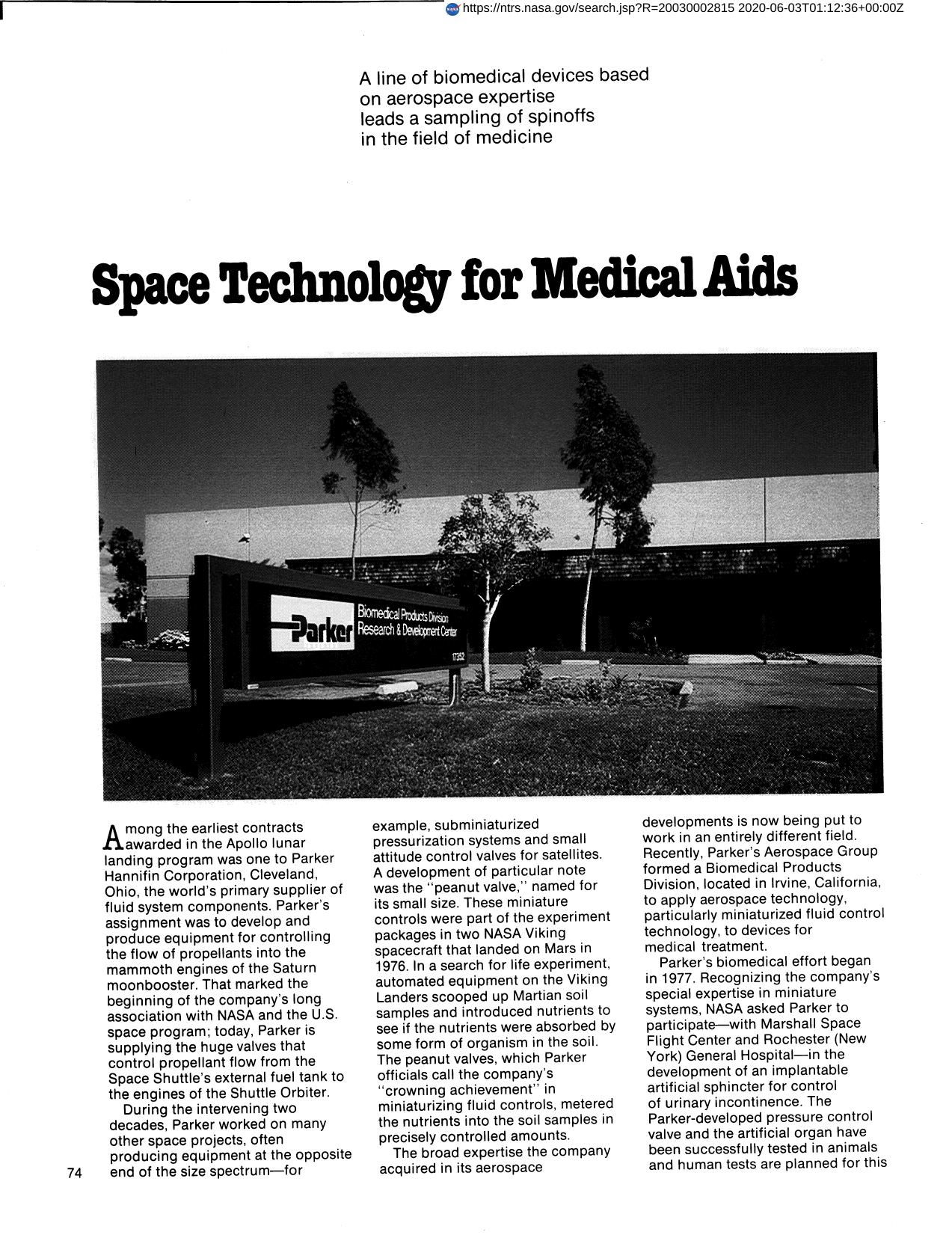
Space Technology for Medical Aids
Under one of the earliest contracts awarded in the Apollo lunar landing program, Parker Hannifin Corporation developed and produced equipment for controlling the flow of propellants into the mammoth engines of the Saturn moonbooster. Today, Parker is supplying the huge valves that control propellant flow from the Space Shuttle's external fuel tank to the engines of the Shuttle Orbiter as well as the peanut valve named for its small size. In 1977, NASA, recognizing the company's special expertise in miniature systems, asked Parker to participate in the development of an implantable artificial sphincter for control of urinary incontinence. The company's peanut valve experience provided an ideal base for a new biomedical project, the Programmable Implantable Medication System (PIMS) for continuous, computer-directed delivery of precisely metered medication -- insulin, for example -- within a patient's body. The work on PIMS also inspired development of Micromed, a related programmable medication device for external, rather than implantable use. The Biomedical Products Division has also applied its fluid handling expertise to a drugless therapy system called Cryomax for the treatment of such disorders as rheumatoid arthritis and lupus.
Full article: http://hdl.handle.net/hdl:2060/20030002815

Space Technology for Medical Aids

Space Technology for Medical Aids













